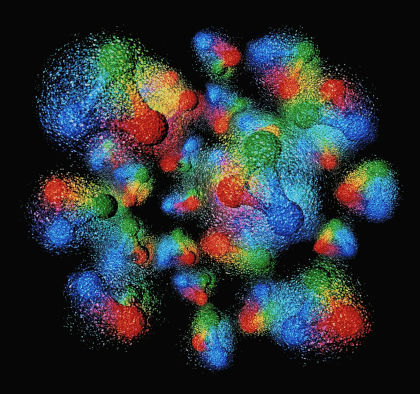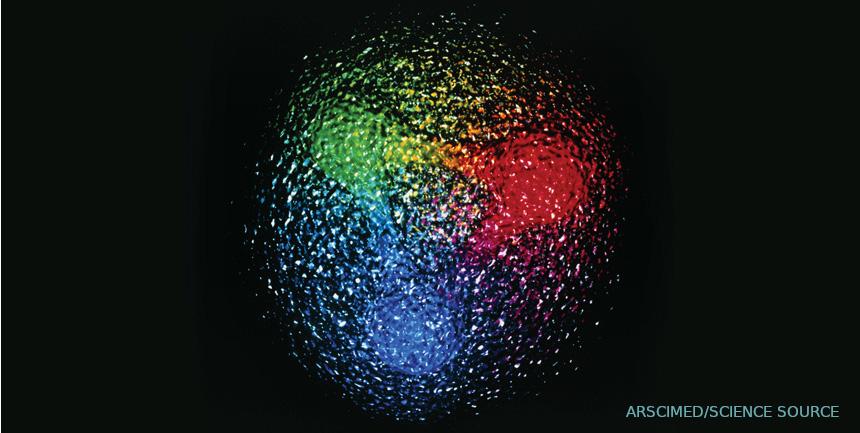A nucleus is made up of protons and neutrons. Initially, these particles were thought to be indivisible. Scientists did many experiments in past to know more about them. In 1960, one such experiment revealed that protons and neutrons contained three smaller particles, called quarks. Quarks come in six types or flavors, and a proton contains two up quarks and one down quark. But for many years, physicists have speculated that protons may also have more massive quarks, called “intrinsic” charm quarks.

Illustration of proton in the Large Hadron Collider. Credit: CERN
An experiment at CERN in 1980 hinted the proton might contain a charm quark and its antimatter equivalent, an anticharm, but the results were inconclusive and not confirmed. Many such attempts were done by different groups of scientists to identify the proton’s charm component, but unfortunately, they were unsuccessful.
Recently a new analysis has been published in Nature [1] which supports this idea. Juan Rojo at Vrije University Amsterdam and his colleagues used a machine learning model to get the hypothetical proton structures.
They compared the data from the machine learning model with the data obtained from different particle accelerator experiments, including at the LHC.
They found that, if the proton doesn’t contain a charm-anticharm quark pair, there is only a 0.3 percent chance of seeing the results they examined. They modeled the statistical distribution of the proton’s momentum both with and without a charm quark and tried to match the results obtained from the LHCb Z-boson experiment. They found the model better matched the experimental results if the proton is assumed to have a charm quark.
It is also found that different studies converge on the same result and so Juan Rojo is quite confident about his research.
[Attributions & References]
Nature, DOI: 10.1038/s41586-022-04998-2
Nature 608, 477-479 (2022) https://doi.org/10.1038/d41586-022-02186-w
- Physicists surprised to discover the proton contains a charm quark






